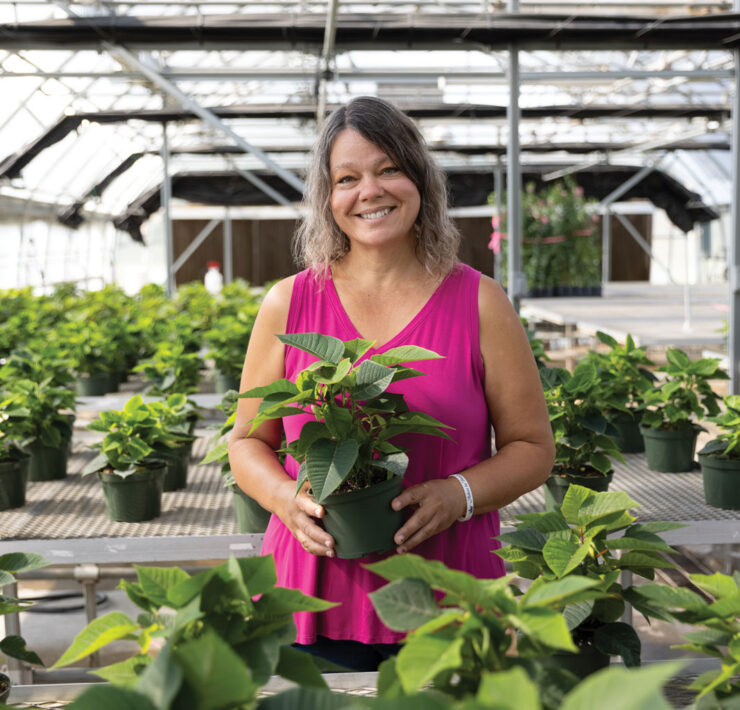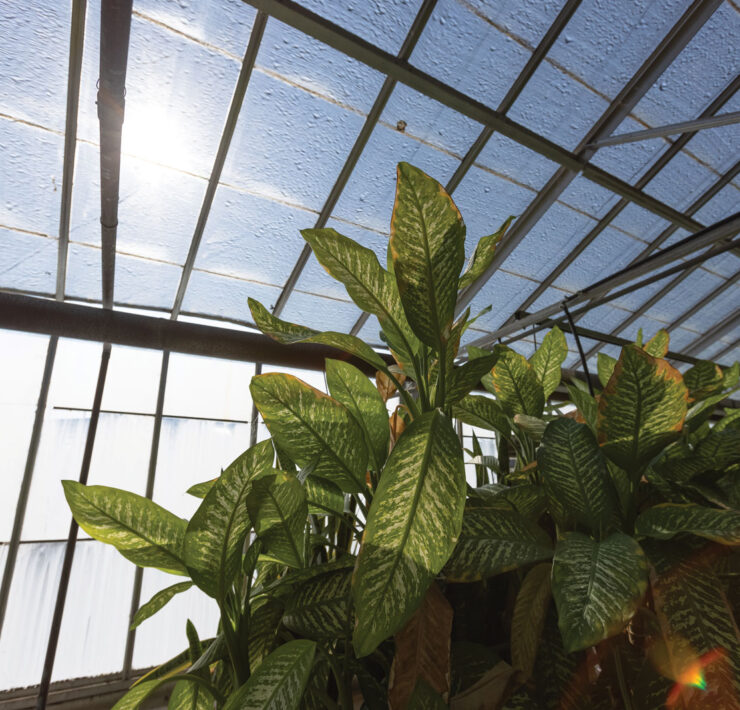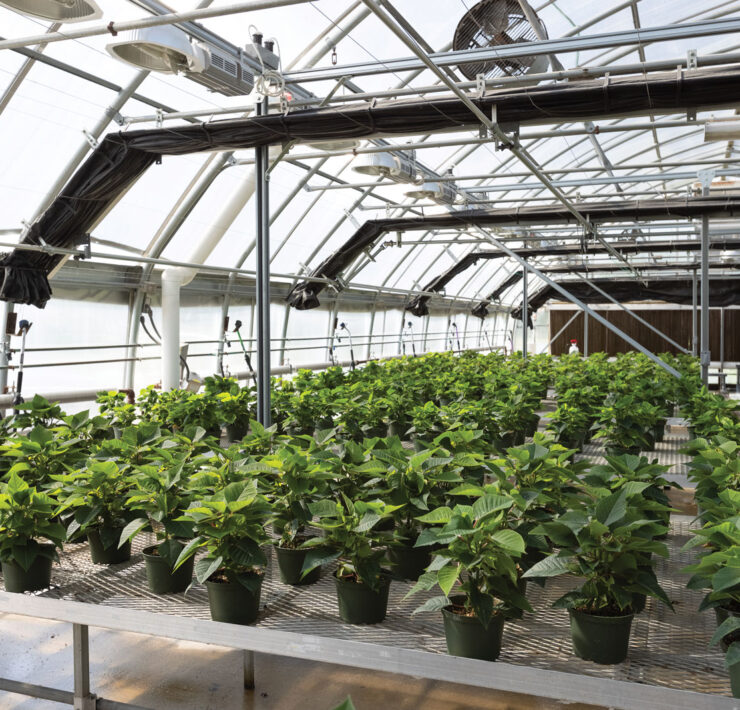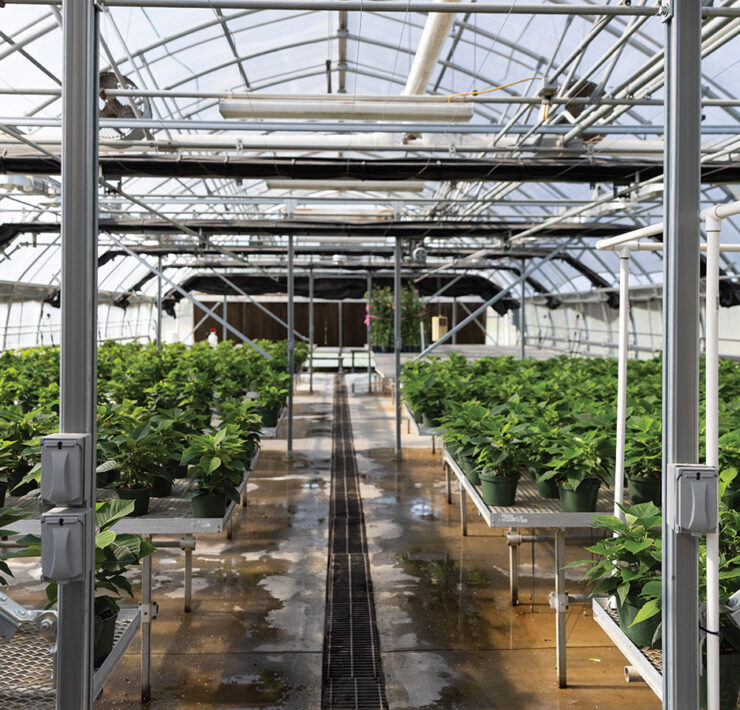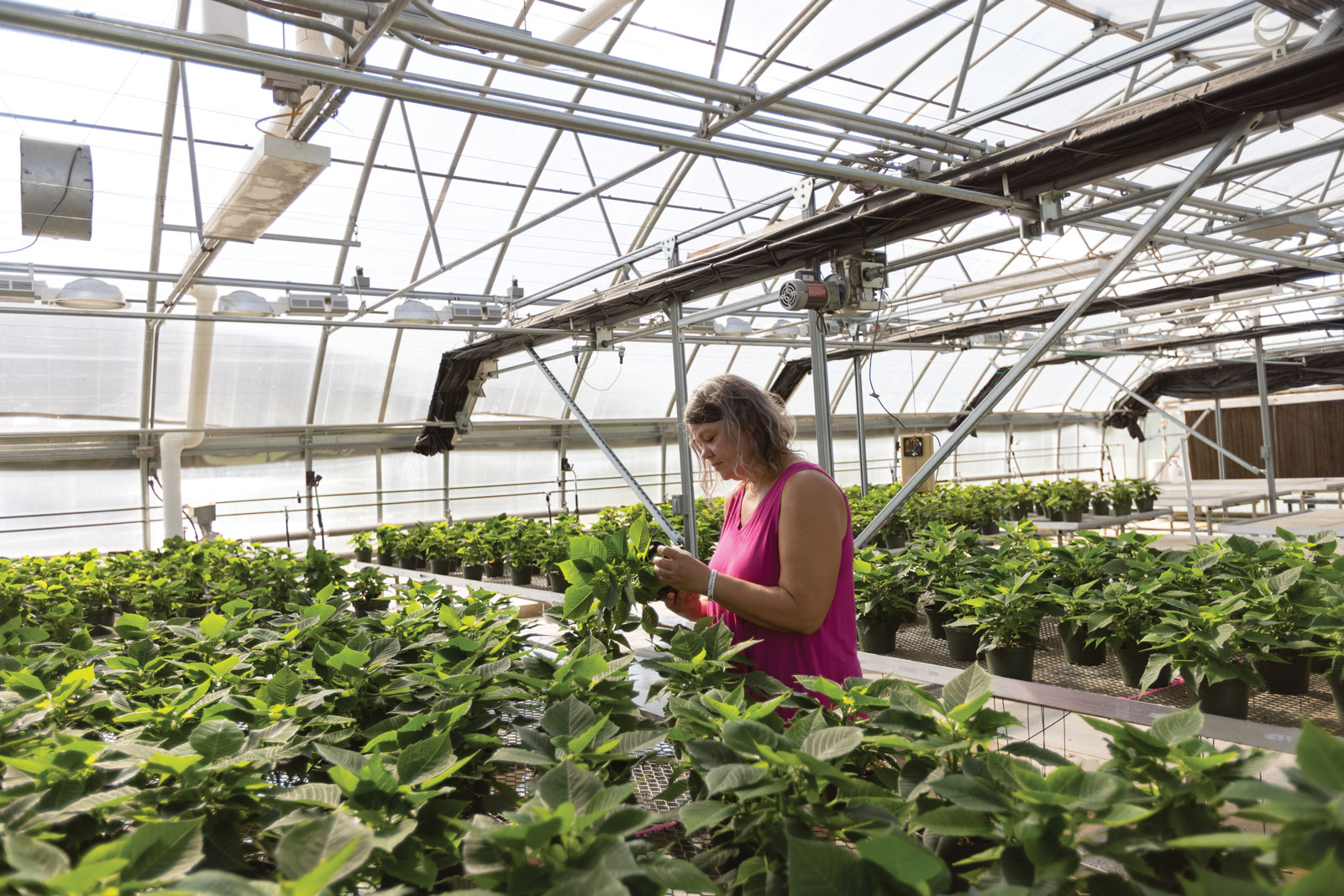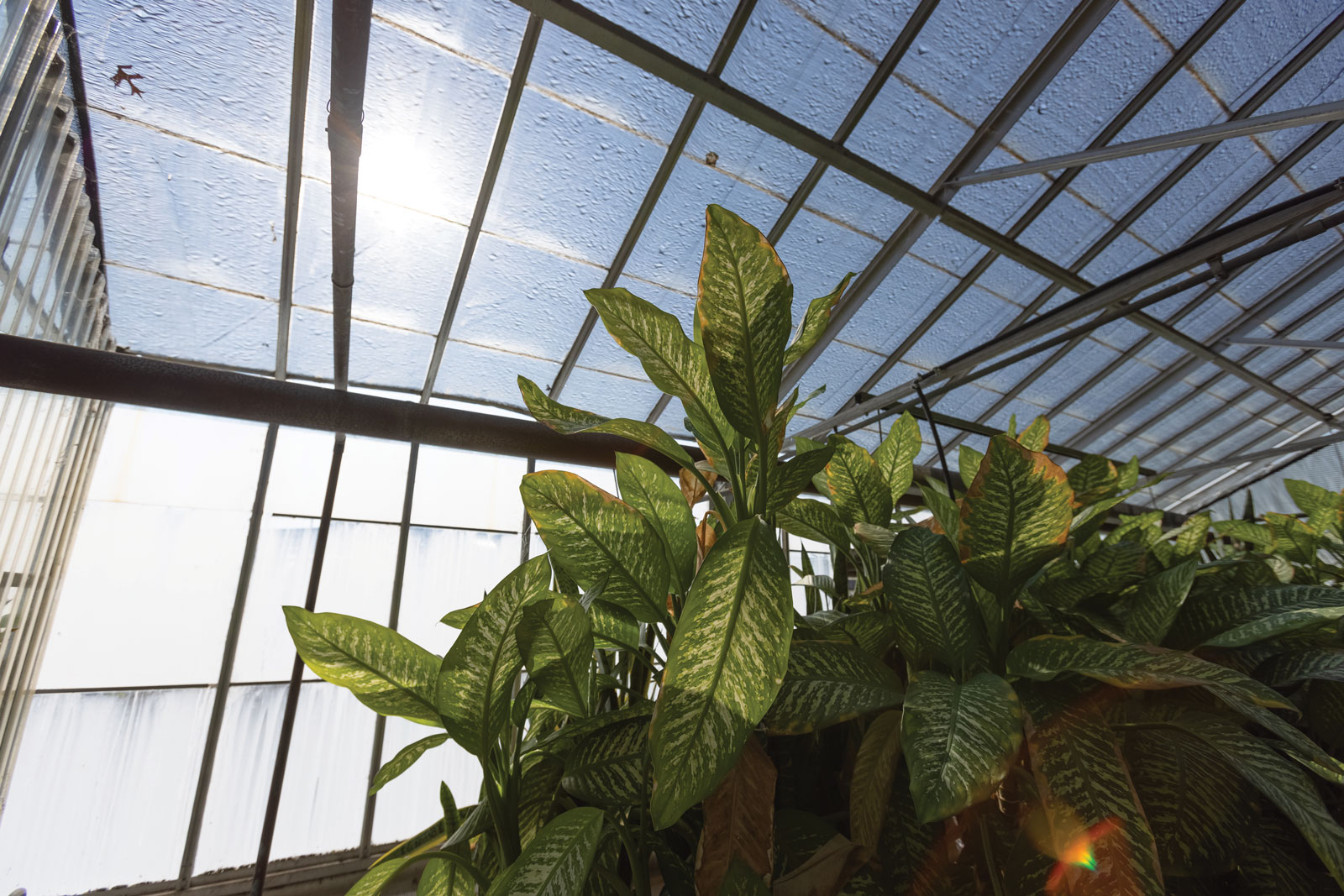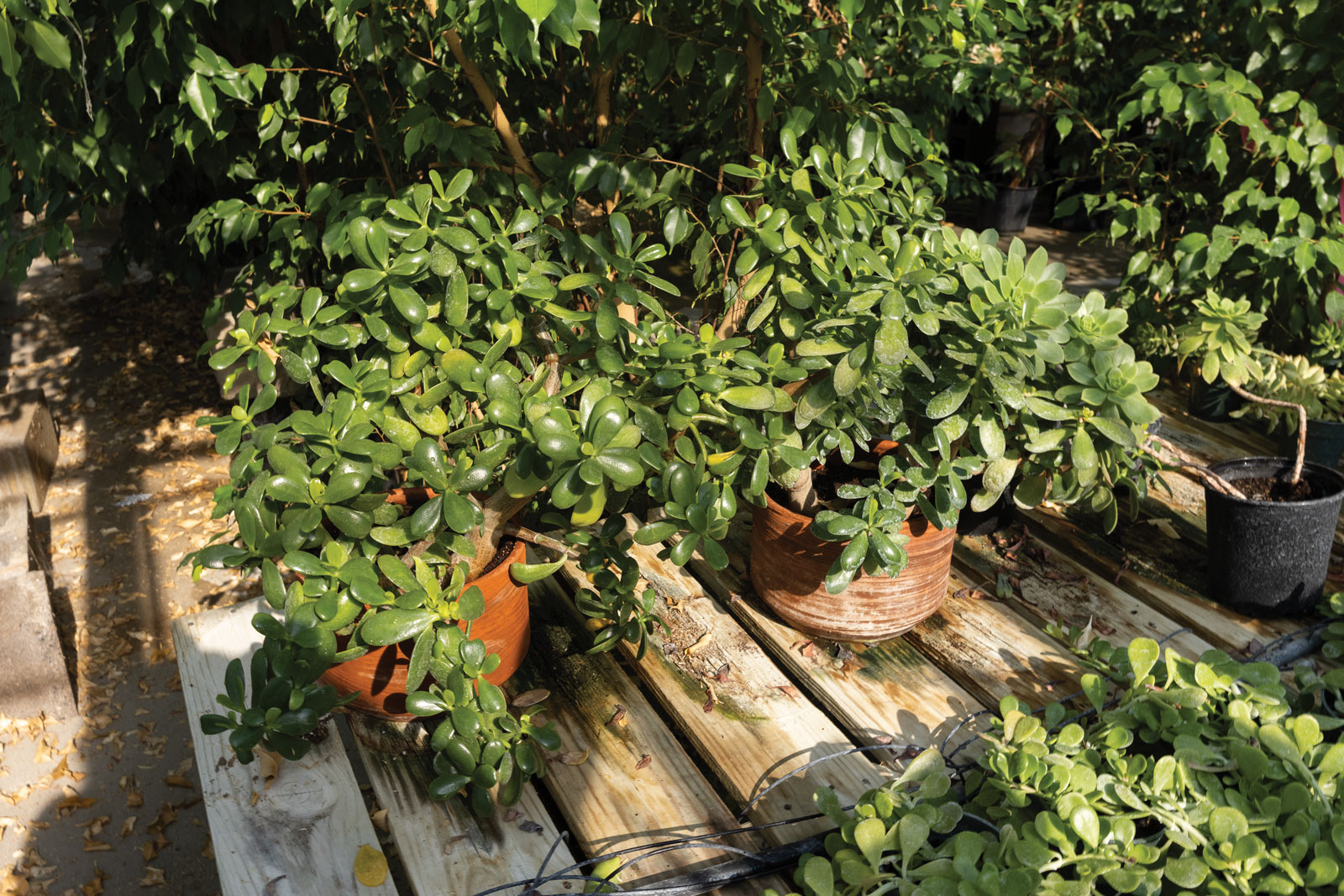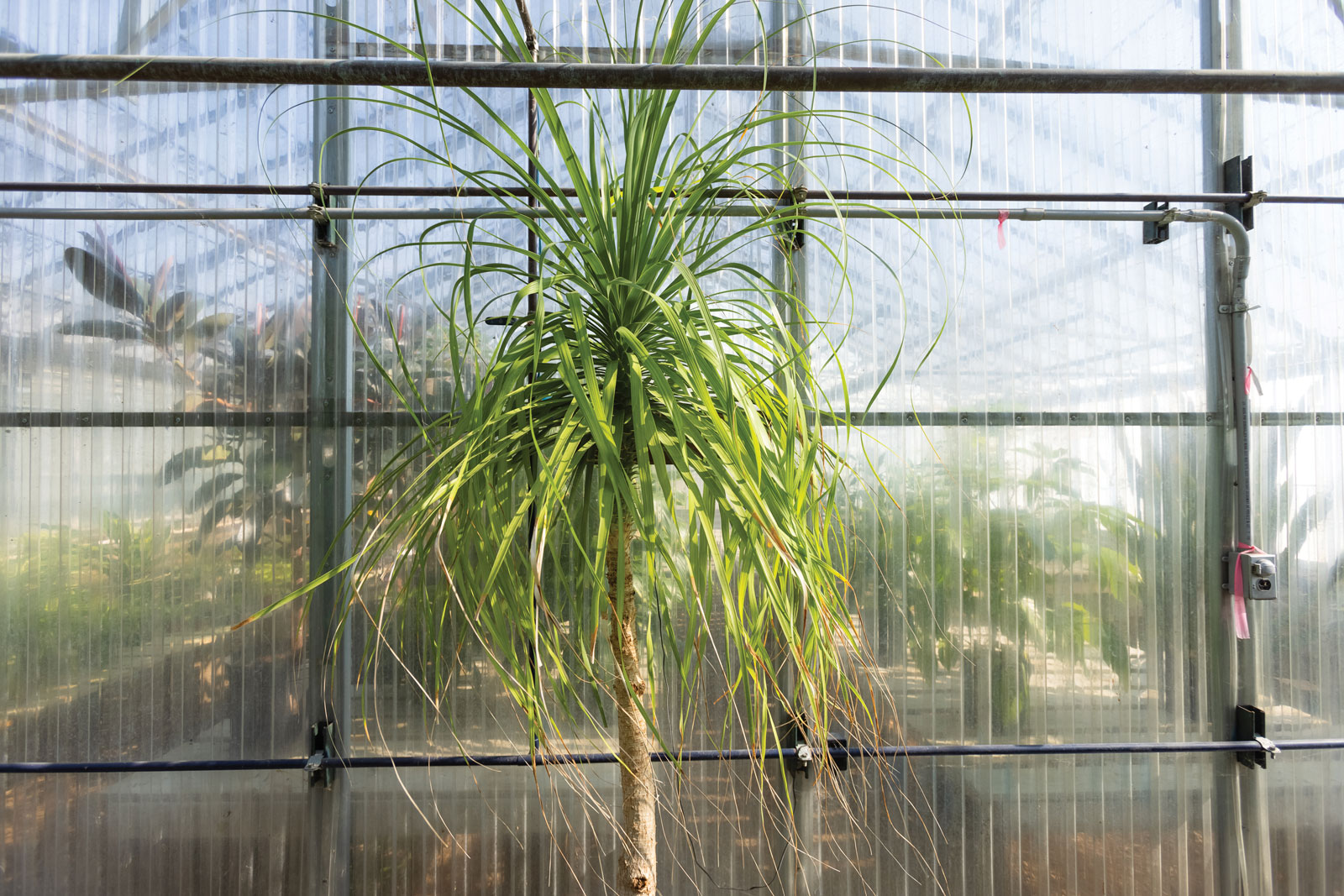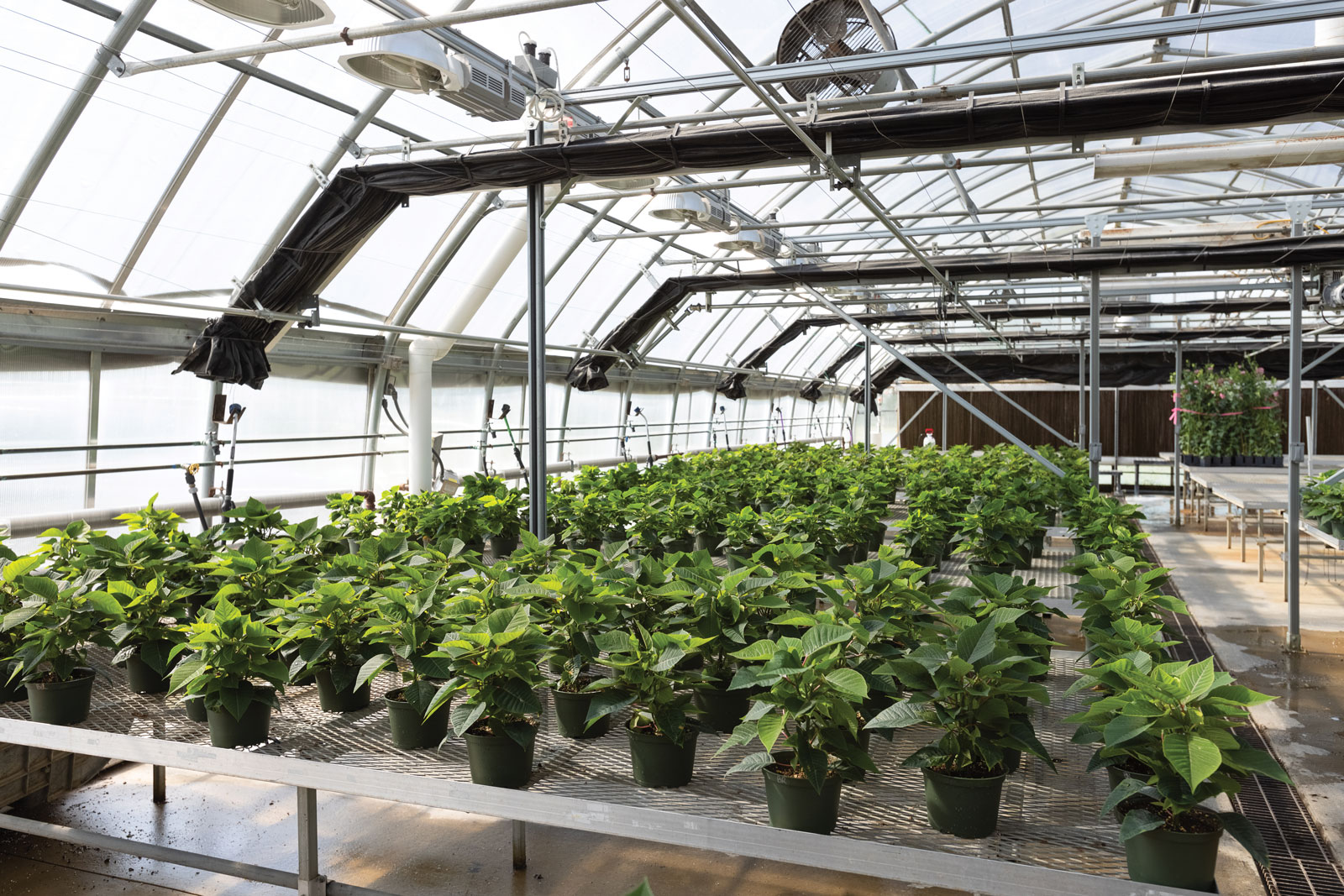Nurturing Green Thumbs
- Photos by Anthony Jinson
- This story originally appeared in the August 2023 Agriculture issue of COMO Magazine

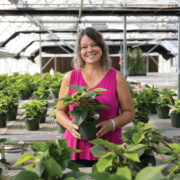


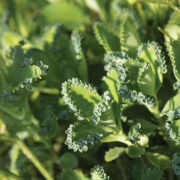 +4
+4 Nurturing Green Thumbs
Nurturing Green Thumbs
Nurturing Green Thumbs
Nurturing Green Thumbs
Nurturing Green Thumbs
Nurturing Green Thumbs
Nurturing Green Thumbs
MU’s greenhouse facilities provide a hands-on education.
In 80,000 square feet of space, across four greenhouse facilities on the campus of the University of Missouri, undergraduate students are involved in hands-on learning, while graduate students and research students are conducting a vast variety of studies and experiments.
“The greenhouses are utilized by multiple departments on campus in addition to Plant Sciences,” says Michelle Brooks, plant growth facility coordinator for the College of Agriculture, Food and Natural Resources (CAFNR) greenhouses at MU. “Approximately 90 percent of the space is used for research purposes and 10 percent is used for teaching purposes.”
All of the greenhouses are located on the main campus, with the East Campus Growth Facility and the Ashland Road Research Greenhouses on the southeast corner of campus; the Ernie and Lotti Sears Plant Growth Facility in the middle of campus; and the Bond Life Sciences Greenhouse on the roof of the Bond Life Sciences Center.
Supporting Hands-on Learning
While several plant science classes include a lab that would bring undergraduate students into one of MU’s greenhouses, there are many other classes that also use the greenhouses. Brooks says that there are about 200 students each semester who use the greenhouse space for a class, in addition to about 50 principal investigators, plus the technicians, graduate students, and post-doctorate students who assist them.
Brooks offers a Worker Protection Standards training each year for anyone who has access to greenhouse space, training about 500 people every year, she says, “so there are a lot of people on campus who use greenhouse space.”
Those who study weed science and turf management participate in labs inside the greenhouses, along with students in many other classes around campus.
In a greenhouse management class, students learn about greenhouse safety, building maintenance, pest management, and some plant production, while students in a plant propagation class learn various propagation techniques, both from seed and from vegetative cuttings, Brooks says. In the greenhouse, students will conduct a range of experiments on the plants they’ve propagated, from rooting hormone experiments to experimenting with different potting media.
In a greenhouse crops production class, which is focused on plants, ornamentals, hanging baskets, and vegetable and herb transplants, students learn commercial crop production by learning to grow plants from start to finish. They also have an opportunity to sell their plants in an on-campus plant shop called Tiger Garden. The money raised goes towards materials for the following year.
Environmental horticulture, an entry-level class that attracts students from all majors, as well as plant science students, also includes a lab in the greenhouse, allowing students to grow plants and plant vegetable gardens.
“Students have the opportunity to come out to the greenhouse to work with plants directly, hands-on,” Brooks says. “It solidifies what they are learning in the classroom. We are proponents of hands-on learning in CAFNR, of getting out of the classroom and into a greenhouse, getting their hands dirty, and learning by doing.”
High Tech Features
Inside the East Campus Growth Facility are 24 greenhouse rooms. Two of those rooms are extended height units, in which plants up to 25 feet tall can be grown.
“We have the opportunity to do tree research or grow tall biofuel grasses when we get those projects started,” Brooks says. “We can do research on full-size mature corn in an extended height growth chamber where we have precise control over the conditions, and that is unique to our location.”
Brooks says a phenotyping system will be installed within the next couple of years, providing an automated data collection process that uses lasers to measure things like tissue volume and plant growth.
While there are a wide variety of research projects underway at any given time, Brooks says the projects are mostly centered around agronomic crops like corn, soybeans, and wheat.
Pesky Pests
As the professional tasked with facility maintenance, Brooks says pest management is her biggest and most time-consuming challenge.
“Greenhouses are a great place for plants to grow, but also have ideal conditions for pests to develop,” she says. “It’s a constant battle — the number one hardest part of the job that takes up the most time.”
With so much space and so many species of plants on which to control pests, Brooks says she uses an integrated pest management program to keep pests under control while minimizing the use of chemicals.
“We can’t avoid chemicals completely, but we rely heavily on physical and cultural controls as well as biological controls,” she adds.
Biological control means using living organisms to control a pest organism, rather than using a chemical. One biological control is releasing predators, like parasitoids, into the environment to naturally control pests. For aphids, that parasitoid is a tiny wasp that will lay an egg in the aphid. As the wasp develops, it kills the aphid.
“We also use types of fungi,” Brooks says. “We spray the fungal spores on the plant and the spores infect the pests and reduces pest levels.”
Because there are so many rooms of plants throughout the four greenhouses, Brooks says she relies on those using the space to notify her of pest problems. She then scouts the space, confirms the pest problem, and selects the best control to remedy the issue.
“I continue to monitor the population to make sure what we are doing is working,” she explains, “and I send notifications if we are doing some control method so the people using the space aren’t doing something to counteract that control. Coordination is a key factor.”
A Peek Inside
Although MU’s four greenhouse facilities are not open to the public, and the research facilities have restricted entry to protect the integrity of the research projects, Brooks says tours are available for students, local garden clubs, and other groups by request. Students who are considering a major in plant sciences are also encouraged to set up a tour.
The greenhouses are also a great place for students to get an on-campus, part-time job, Brooks says.
“I have four or five students who work for me each semester, plus the principal investigators generally have undergrads who work for them,” she notes. “It’s a great on-campus job opportunity where students can get more hands-on experience with plants.”




